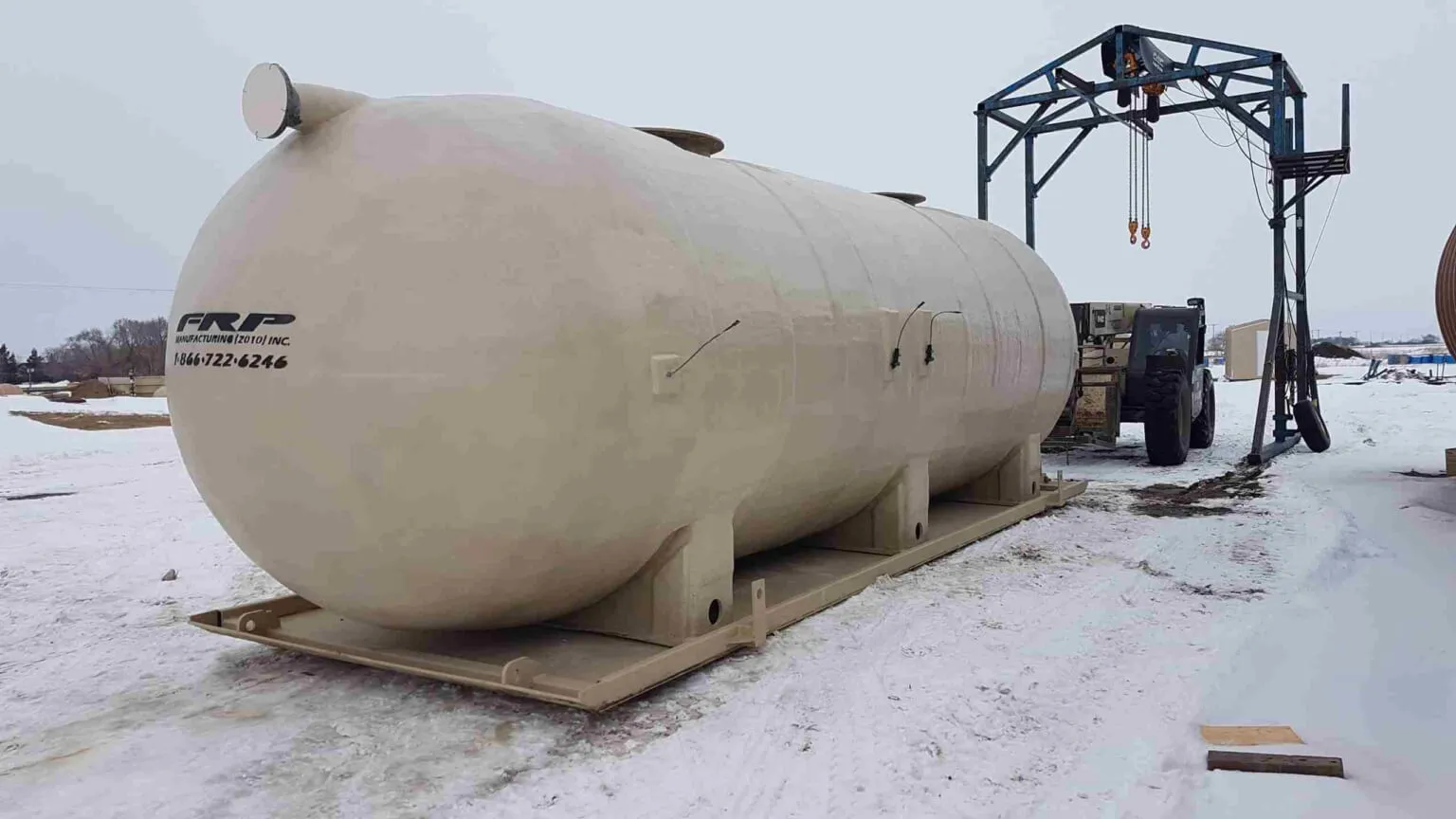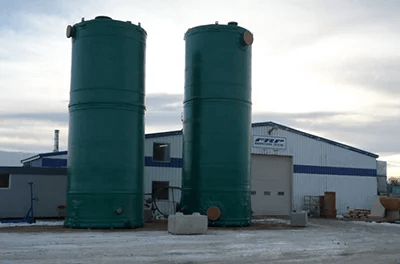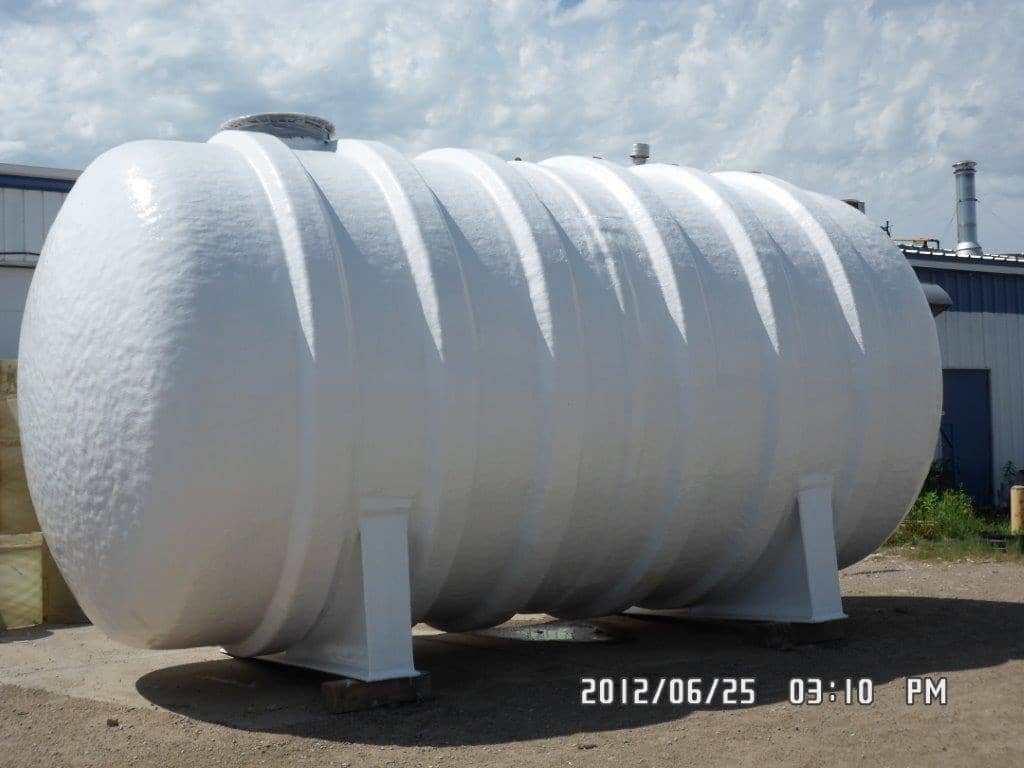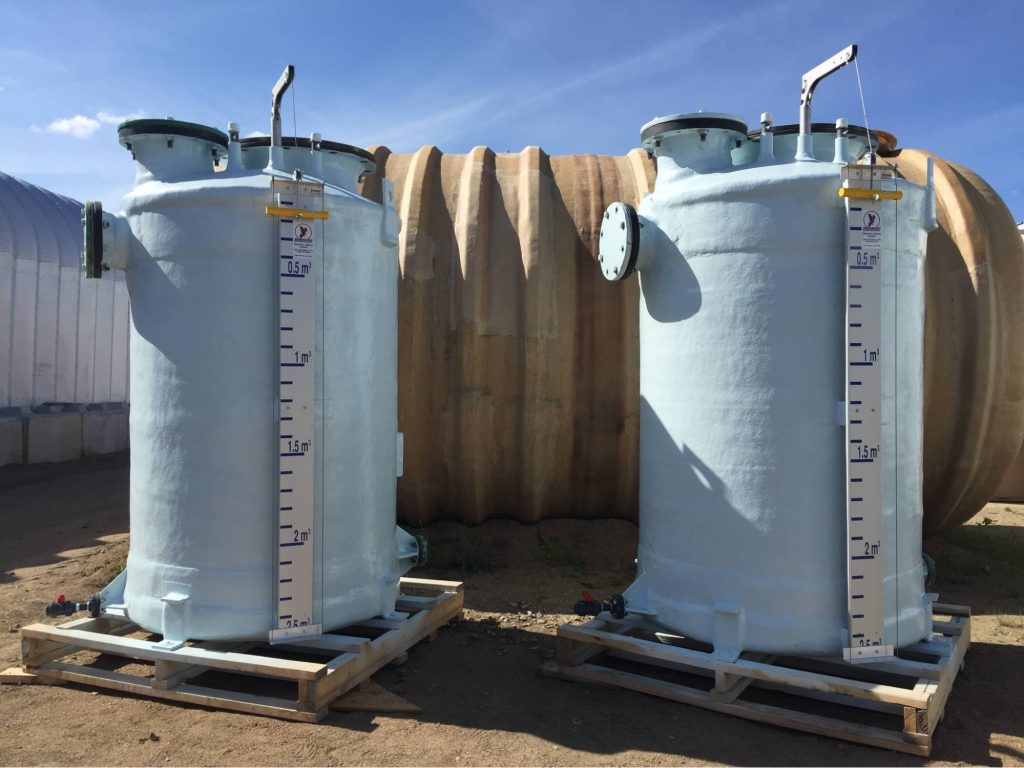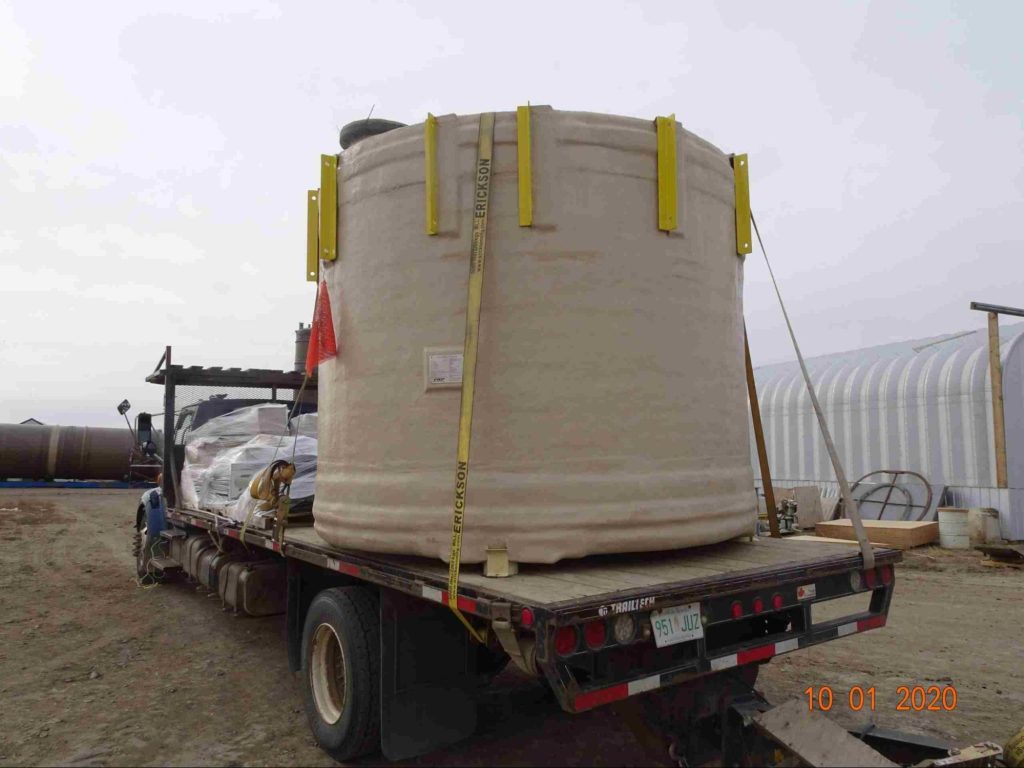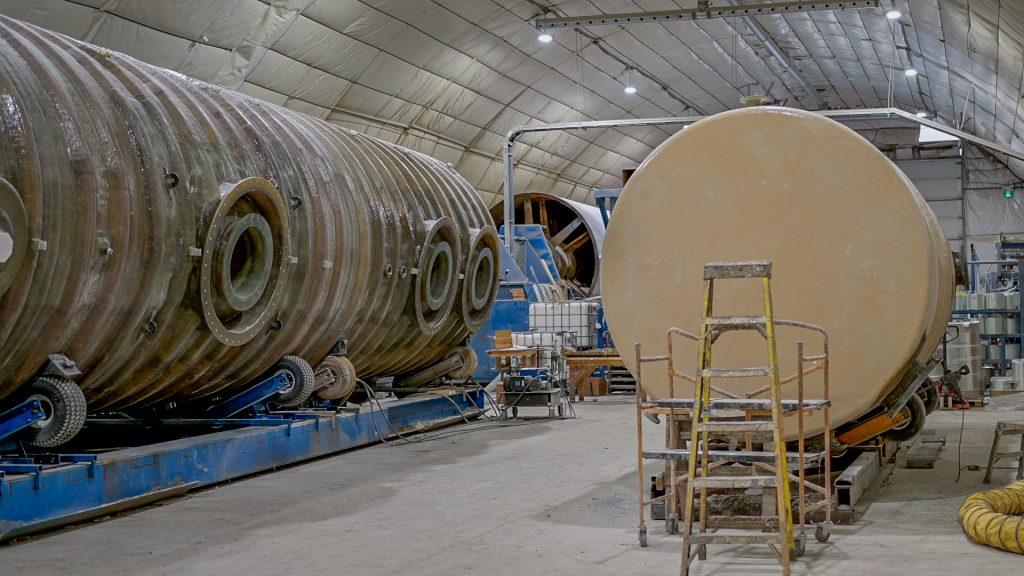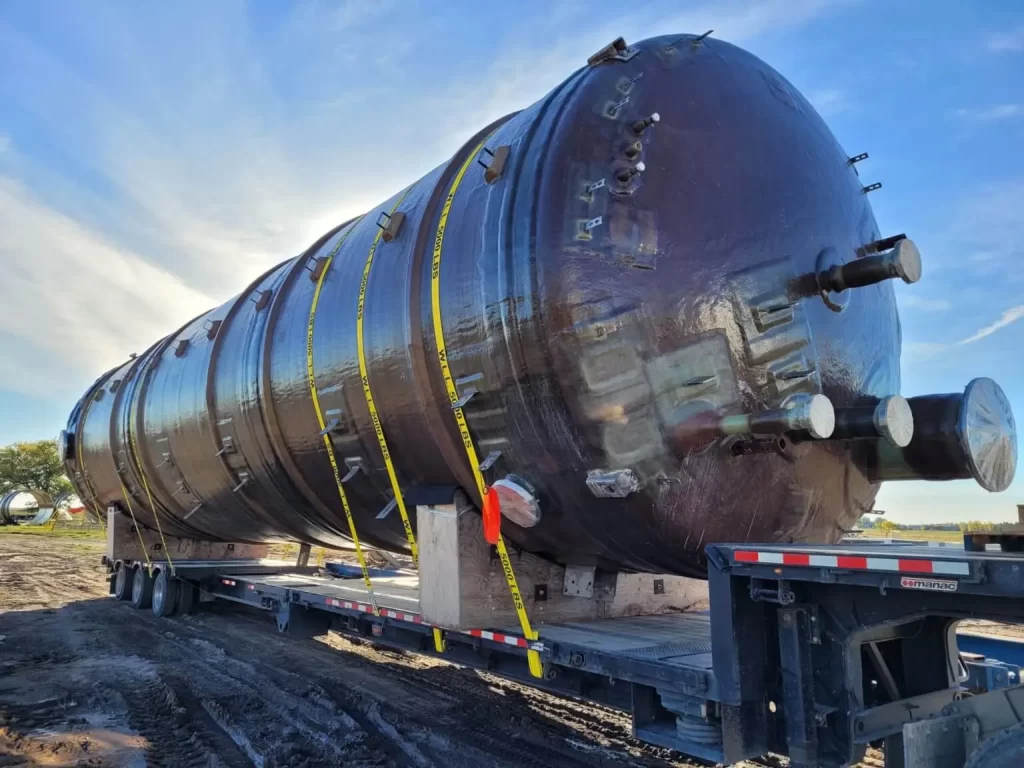Fiberglass tanks are well-known for their durability and resilience, which include their ability to withstand various stresses, impacts, and environmental conditions while maintaining their physical and structural integrity. Unlike steel, which has a high rate of thermal conductivity, fiberglass tanks are not thermally conductive and this lowers the risk of cold damage drastically. In addition, steel can become brittle in extremely cold temperatures and it is also vulnerable to corrosion.
FRP Mocoat equipment has been used as far north as the north slope of Alaska, and our FRP structures stand up to temperatures that are routinely at -30 degrees Celsius and below. This is because the structural components of fiber-reinforced plastics offer great endurance in harsh environments and their built-in resistance to temperature fluctuations, in addition to corrosion resistance, allows FRP Mocoat tanks to be utilized in cold weather climates. In this article, we’ll walk you through the exceptional features of fiberglass tanks that allow them to thrive in extreme winter conditions.
Why Are Fiberglass Tanks Well-Suited For Winter?
The following are some of the several advantages that make fiberglass tanks an excellent choice for your liquid or gas storage requirements in harsh winter climates:
Insulation
Fiberglass is a good insulator material, and this helps to maintain stable temperatures inside the storage tank. The insulation properties are useful in winter conditions when external temperatures can drop significantly and help to prevent the storage materials of the tank from becoming too cold.
Corrosion-Resistant Properties
Fiberglass is corrosion-resistant, unlike steel tanks which can corrode over time. This feature of FRP tanks is especially important in winter when exposure to moisture, snow, and ice can quicken the corrosion process in steel or metal tanks. The corrosion-resistant feature of fiberglass tanks makes FRP tanks long-lasting and resilient in cold environments that are exposed to moisture, chemicals, or salt.
UV-Resistant
FRP tanks are commonly treated to be UV-resistant and this protects them from the potentially damaging effects of extended exposure to sunlight. This feature of FRP tanks is relevant especially in winter when there can be clear and sunny days, and UV radiation could potentially impact the tank’s integrity over time.
Durability
FRP tanks are known for their inherent strength. This material comprises layers of glass fibers embedded in a resin matrix, which creates a composite structure that can endure several physical stresses. This strength allows fiberglass tanks to be resilient to physical impacts and pressure changes which is important in winter conditions, since these tanks can withstand the physical stresses that may arise in winter such as the weight of snow, or ice accumulation on the tank. In addition, FRP tanks’ resistance to cracking or breaking allows them to be reliable in changing and challenging weather conditions.
No matter how extreme the weather gets, our tanks are built to endure it all! Whether you’re dealing with corrosive substances or operating in an intensely cold setting, FRP Mocoat tanks are engineered to withstand the conditions. Whether you choose a standard tank or opt for a specially designed tank tailored to your job site requirements, we’ve got the perfect solution. Contact us at (306) 329 4884 to share the details of your upcoming project – we’re here to assist!

